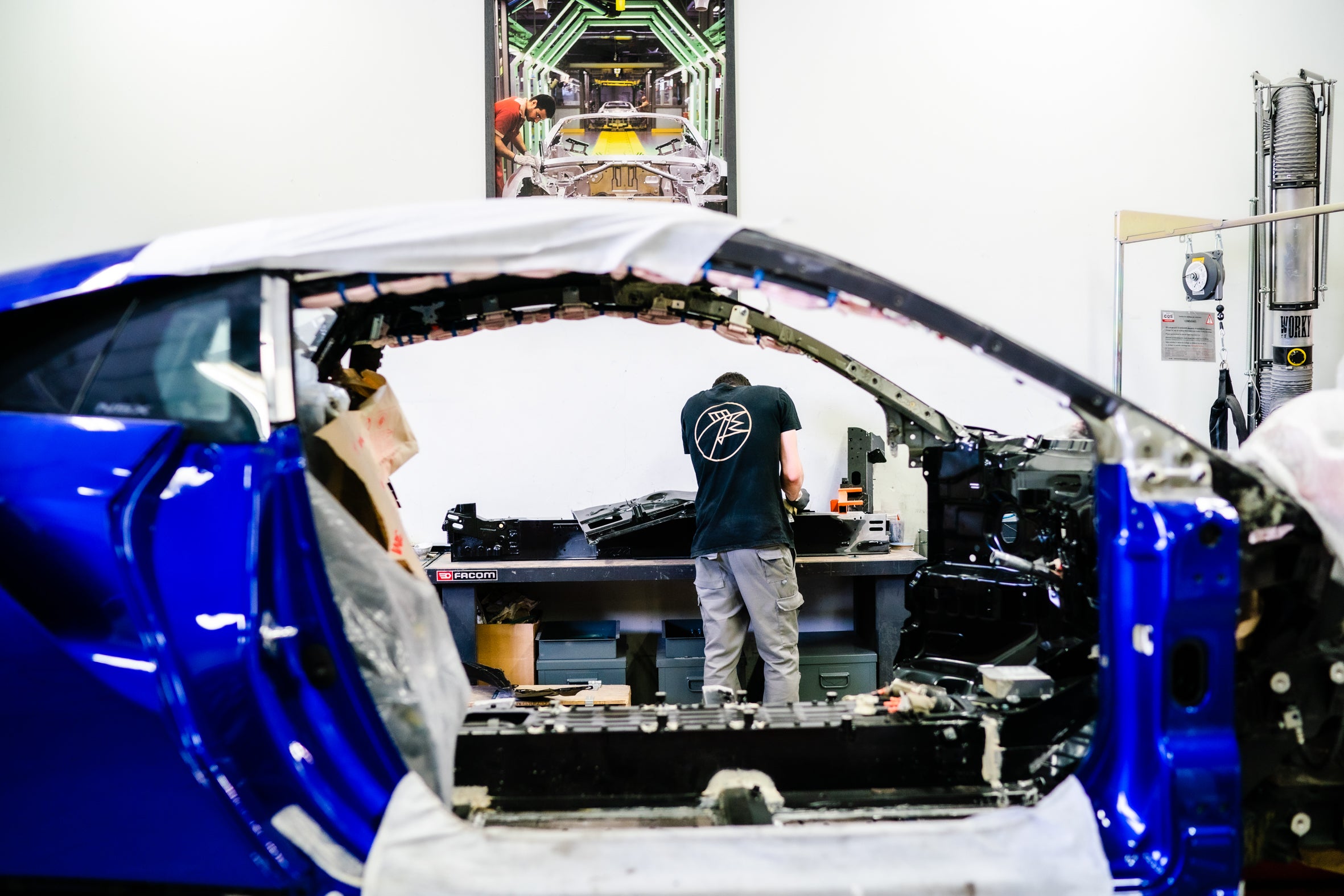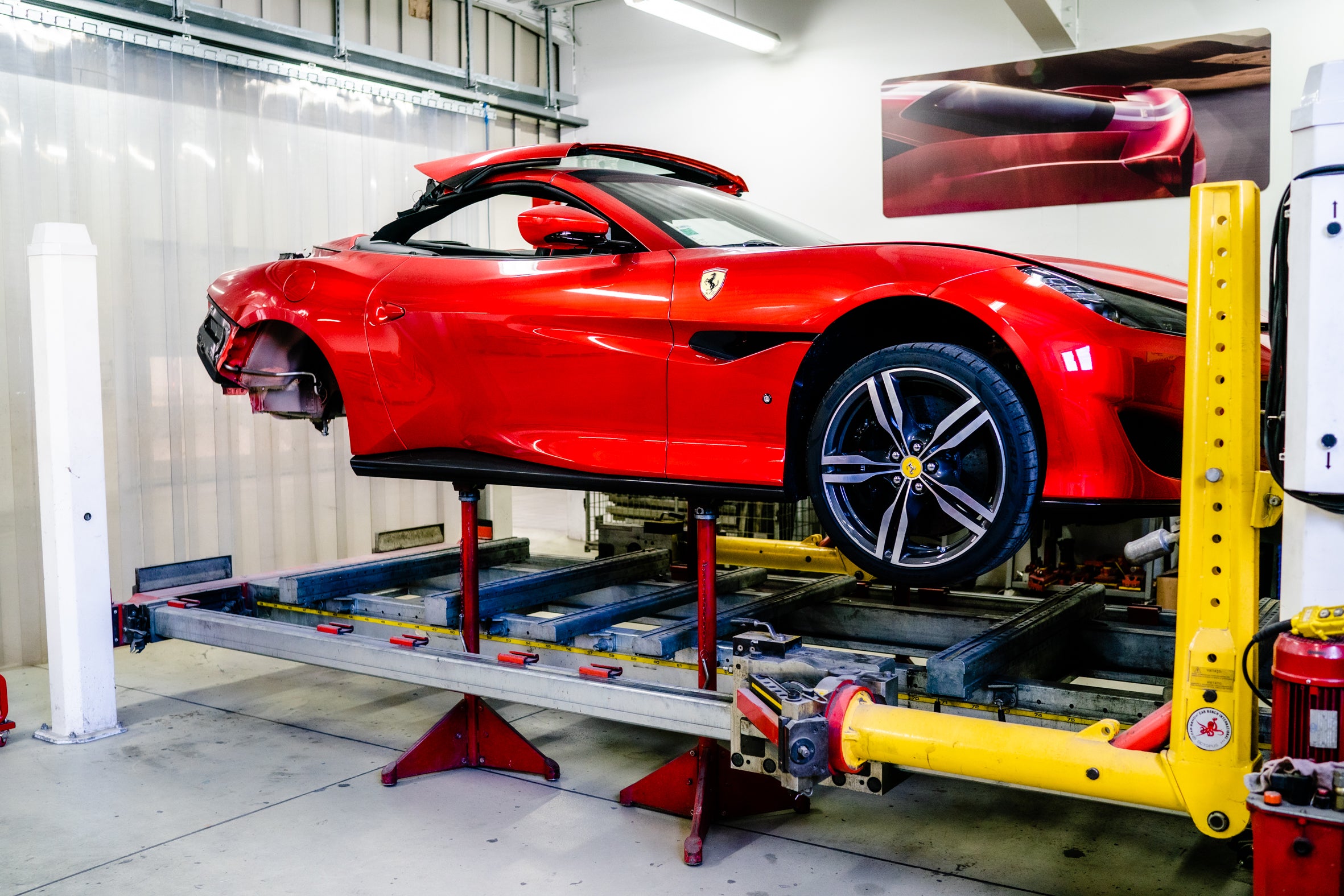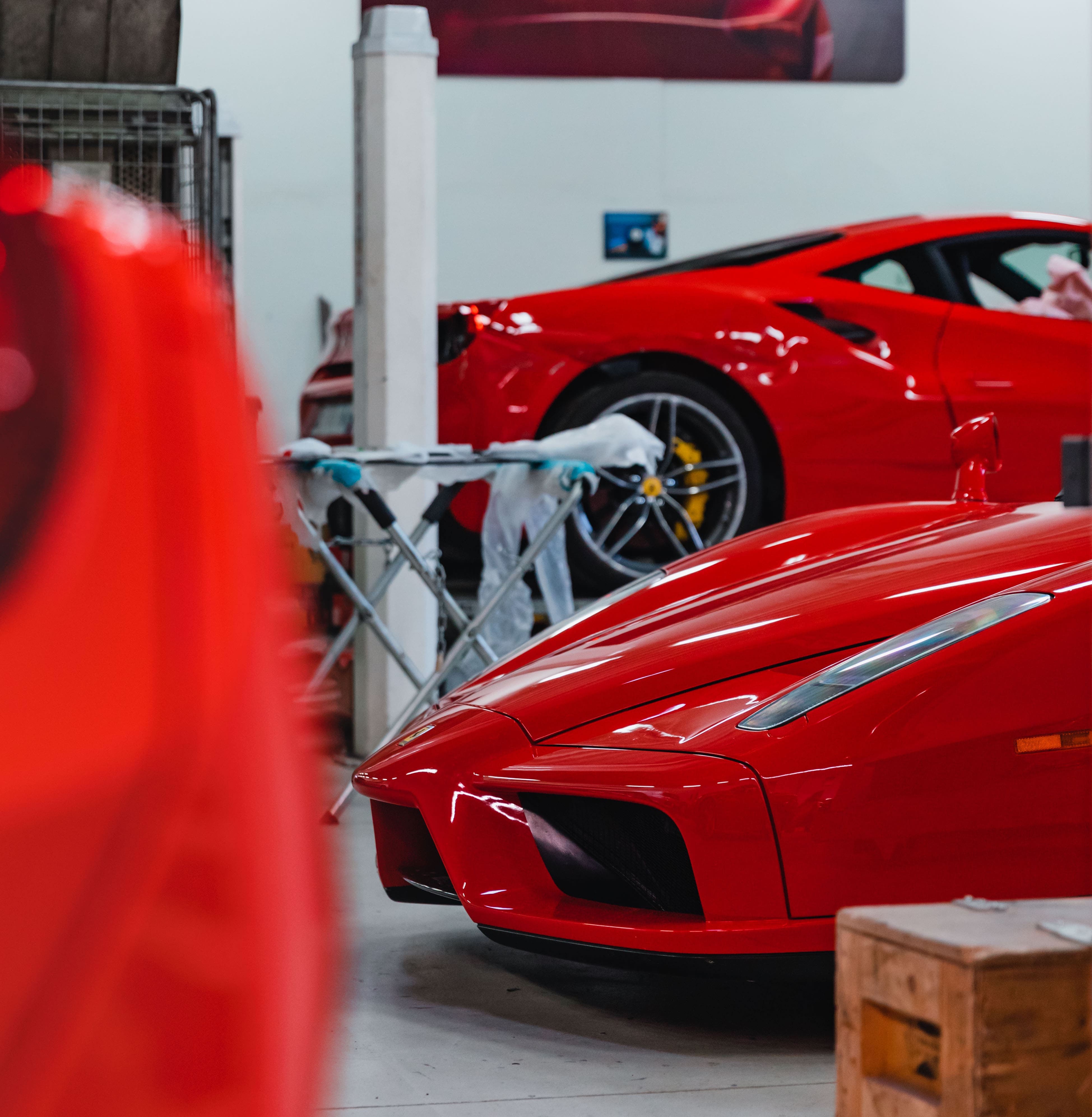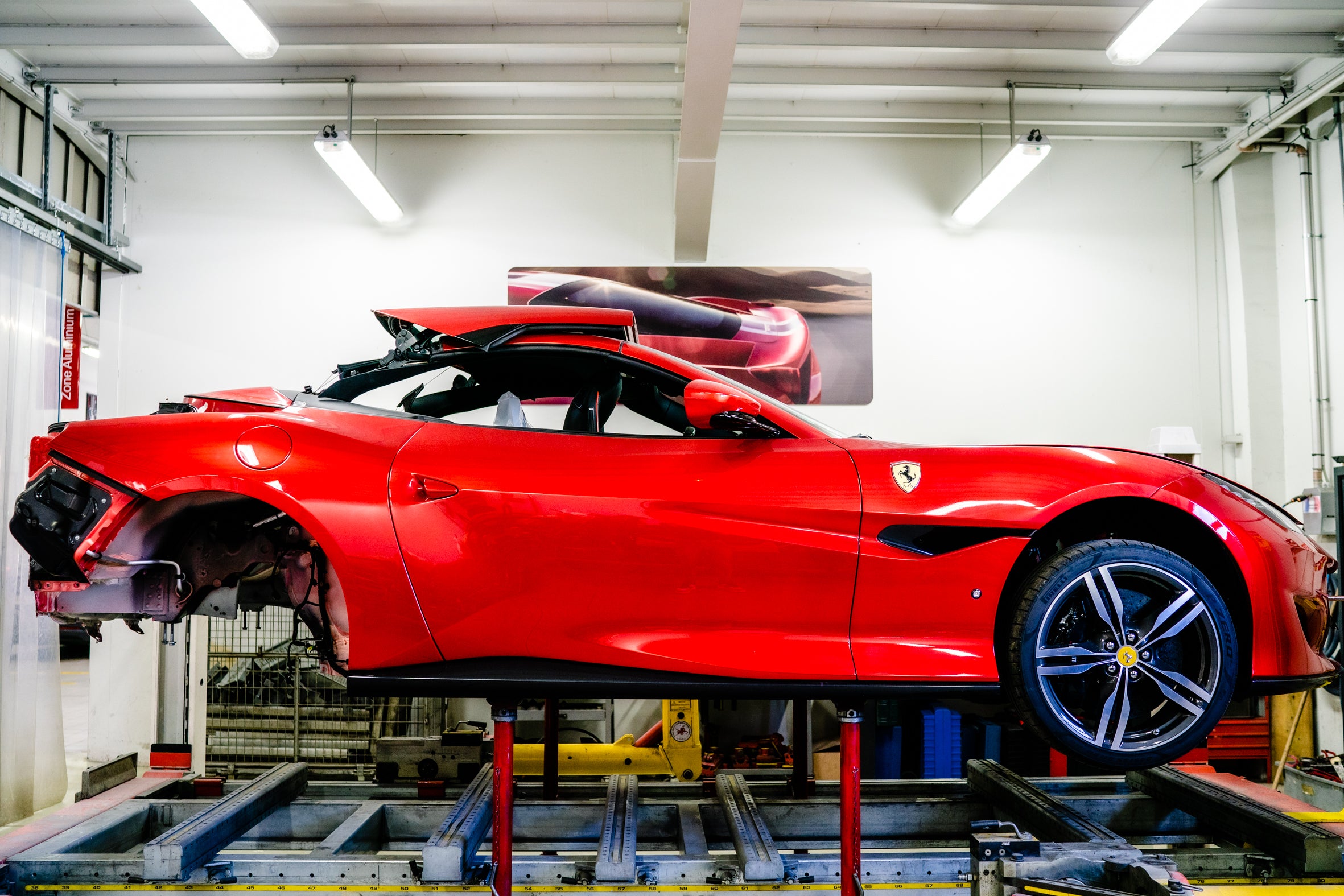Aluminum
Carrosserie Lecoq is renowned for its high-quality restorations and the repair of prestigious vehicles. But Lecoq also has its specialties which have made it famous. Lecoq is, first of all, a great mastery of aluminum work.

More and more super cars have an aluminum structure, whether Ferrari, Tesla, Lamborghini or even Jaguar...
But aluminum is also found on old ones and it requires special know-how and attention to detail that steel does not require. Whether for customization, repair or restoration of old aluminum vehicles, the work must be specific.
Indeed, aluminum is a much more fragile material than steel and therefore much finer to work with. To fully understand how aluminum works, you need to know its properties:
- Aluminum presents a much greater risk of work hardening than steel. Indeed, when you straighten an aluminum support cold, it quickly tends to crack.
- Aluminum elongates more than steel, which is a problem during straightening operations.
- The material is soft and therefore easily marked by tools, especially when they are sharp. It is very elastic. This is an advantage when it hails, for example. But it is a disadvantage when trying to straighten it out. Indeed, the hammer will bounce. It is therefore necessary to hit harder while paying attention to its elasticity so that it does not stretch.
- Working with aluminum requires particular vigilance when it is heated. Indeed, the latter does not redden like steel. It is therefore more difficult to control the temperature and work at good heat.
The properties of aluminum explain the delicacy of its work and provide a clean environment, particularly for welding.
The aluminum work on the old ones was often done on skin elements such as the hood, the rear trunk, the door panels and even the front fenders. Aluminum was used to lighten the vehicle in order to improve the performance of the underpowered engines of the time.
Aluminum is mainly found on old racing cars. It is therefore a form of work. Today in restoration, formal work is equivalent to rebuilding exterior parts of the automobile.
Working with aluminum takes us to old ones via the making of new skins but also to modern ones for customizations, creation of parts, as well as repairs.

However, the moderns are not left out. Today, many super cars are made of aluminum. The objective is the same as the old ones, to lighten the car but also to make the chassis more rigid in order to support more power. Aluminum is found in three forms in modern cars: stamped aluminum, tubular aluminum and foundry aluminum. Indeed, thanks to technical developments, aluminum can be worked in three ways.
- The first methodology for working with aluminum is riveting.
Almost all brands on the market use it. There are two forms of rivets: structural breakage rivets and self-punching rivets. - The second methodology for working with aluminum is bonding. It can be used both for body panels, the skin and for structural elements such as side members, or even the passenger compartment cell. Most of the time, bonding is accompanied by riveting and/or sometimes welding.
- The third methodology is welding. However, on aluminum, it is not carried out with the same gas as steel welding. In addition, aluminum welding is done at a temperature much lower than that of steel.
Working with aluminum requires specific equipment and advanced know-how. At Lecoq, an exclusively aluminum zone has been set up and the bodyshop has been approved by Ferrari, Jaguar, Land Rover and Range Rover since 2012. Likewise, all the workers who work on the aluminum super cars have followed specific training for each brand.
Multimaterials
Beyond our recognized expertise in working with aluminum, we are proud to highlight our specialization in the repair of cars made from multi-material elements.
Modern vehicles increasingly incorporate sophisticated composite materials such as carbon fiber, steel and many others. At Lecoq, we understand the critical importance of mastering the repair of these materials to guarantee the safety, performance and aesthetics of your car.

Our highly trained teams are dedicated to making every repair perfect. Each of our technicians is trained to handle with precision, ensuring a complete restoration of your vehicle, whether following a collision, impact or structural damage.
Multi-material repair process:
- Advanced diagnosis: Our experts perform a precise diagnosis to assess the damage, looking at each material present in your vehicle.
- Specialized techniques: We use advanced repair methods, adapted to each material, guaranteeing a durable and aesthetically impeccable restoration.
- State-of-the-art equipment: Carrosserie Lecoq invests in specialized equipment, such as welding tools adapted to multi-materials, ensuring optimal precision at each stage of the repair.
- Rigorous quality control: Every repair is subject to strict quality control to ensure optimal performance and maximum safety.
By choosing Carrosserie Lecoq, you are opting for unrivaled technical expertise, coupled with our commitment to customer satisfaction. Our reputation for excellence is the guarantee that we will exceed your expectations every step of the repair process.


